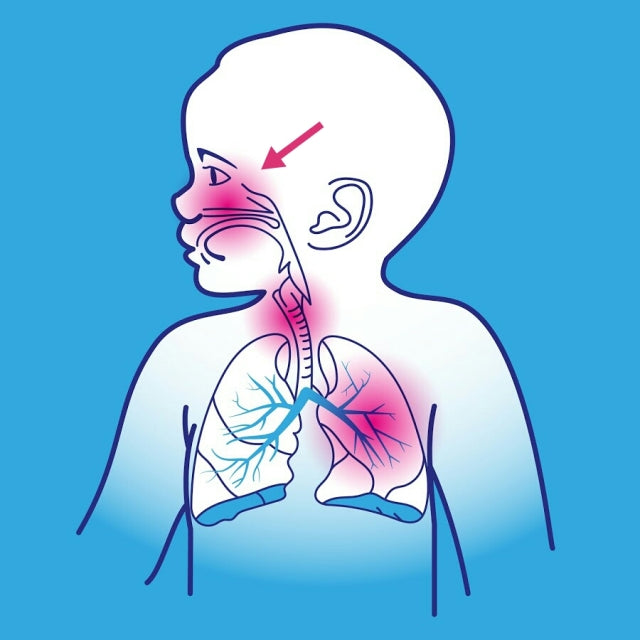What’s An Upper Respiratory Tract Infection?
Upper respiratory tract infection is one of the most common viral infections in children. Upper respiratory infection is always referred to as common cold. However, influenza is also one of the common upper respiratory tract infections.
Colds in kids
Kids get about eight colds per year. It is the top reason to miss school and to visit doctor. Most of the colds are caused by rhinoviruses. Rhinoviruses are found in invisible droplets in the atmosphere and in the things we touch. The viruses get into the protective lining of throat and nose. This sets off an immunity reaction in the child’s body causing symptoms like headache, sore throat and trouble in breathing.
What are the common symptoms of cold?
- Stuffy or running nose
- Cough
- Sore throat
- Mild fever
- Loss of appetite
- Tiredness
- Headache
How do colds spread?
Direct contact: A child with cold has virus in his or her nose, hands, mouth and eyes. Colds spread through direct contact like holding hands, kissing or touching an infected child.
Indirect contact: Toys, clothes, towels and utensils used by the infected child carry the virus. Even things like door knobs touched by the infected children carry the virus. The virus from these things spread to a healthy child when they touch these objects.
Through air: Virus spreads through air when the infected child sneezes or coughs. The virus enters the air and may enter another child’s nose or mouth.
How are colds treated?
Most of the colds will go away on their own without any treatment. Antibiotics do not work for colds as they are caused by virus and not bacteria. Medicines will not treat cold but will give relief from symptoms of cold. Home remedies like saline drops and nasal aspirators help in clearing stuffy nose. Warm fluids keep your child hydrated. If you are going for over the counter acetaminophen or paracetamol make sure you don’t give an overdose.
When to visit the doctor ?
- Is your baby under 3 months of age? If so, you should visit your doctor if your baby has trouble in breathing and if your child is not eating and if your child has symptoms like vomiting and high fever.
- If your child is older, you should take your child to the doctor if
- Your child’s lips are blue
- Your child’s breathing is rapid
- If your child is very sleepy than usual
- If the mucus from the nose is yellow or green in color
- If your child is fussy and does not play
- If the child’s cough is very severe
Influenza
Although both flu and colds are upper respiratory tract infections, they are caused by different viruses. Most of the symptoms of cold and influenza are the same except for a few differences.
The symptoms of flu are generally worse than cold.
- The onset of flu is abrupt.
- Colds are rarely accompanied with fever. Flu is always accompanied with fever.
- Body aches are severe in flu.
- Stuffy nose, sneezing and sore throat are common for colds. These symptoms may or may not be seen in flu.
- Chills are common in flu.
How does flu spread?
Like colds, it also spreads through direct or indirect contact and through air.
Treatment
Children with flu can be treated at home if the symptoms are not very severe. Children should take rest. They should not be sent to school until the symptoms go off completely. Lot of fluids should be given to prevent dehydration.
You should call your doctor if your child is below one year old, if your child has week immunity, if your child has asthma or diabetes, if your child has symptoms like vomiting, trouble in breathing, dehydration, blood in sputum and bad cough and if your child has seizures.

